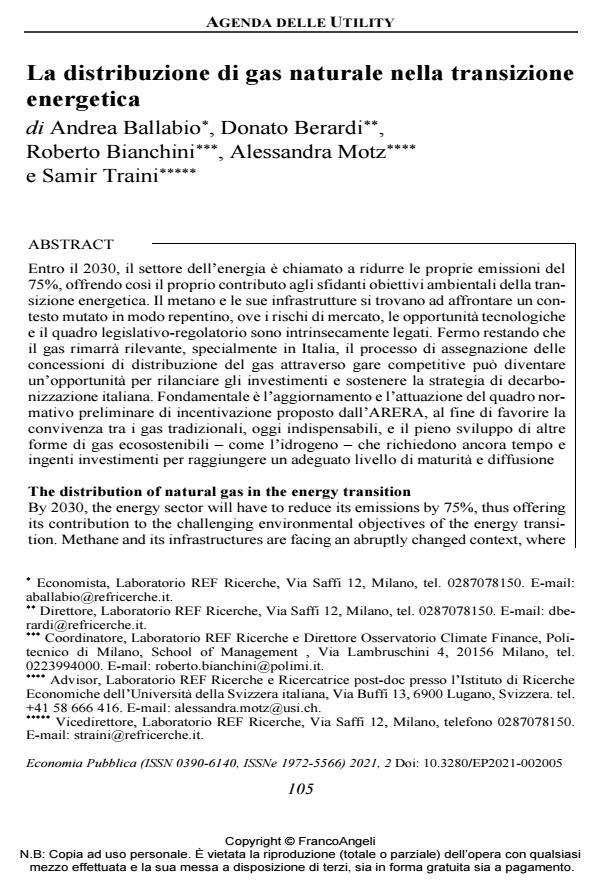The distribution of natural gas in the energy transition
Journal title ECONOMIA PUBBLICA
Author/s Andrea Ballabio, Donato Berardi, Roberto Bianchini, Alessandra Motz, Samir Traini
Publishing Year 2021 Issue 2021/2
Language Italian Pages 20 P. 105-124 File size 467 KB
DOI 10.3280/EP2021-002005
DOI is like a bar code for intellectual property: to have more infomation
click here
Below, you can see the article first page
If you want to buy this article in PDF format, you can do it, following the instructions to buy download credits

FrancoAngeli is member of Publishers International Linking Association, Inc (PILA), a not-for-profit association which run the CrossRef service enabling links to and from online scholarly content.
By 2030, the energy sector will have to reduce its emissions by 75%, thus offer-ing its contribution to the challenging environmental objectives of the energy transition. Methane and its infrastructures are facing an abruptly changed con-text, where market risks, technological opportunities and the legislative-regulatory framework are intrinsically linked. Notwithstanding the fact that the natural gas will remain relevant, especially in Italy, the process of assignment of gas distribution concessions through competitive tenders can become an oppor-tunity to relaunch investments and support the Italian decarbonisation strategy. The update and the implementation of the preliminary incentive regulatory framework proposed by ARERA is crucial, in order to foster the coexistence be-tween traditional gases, which are currently essential, and the full development of other forms of environmentally sustainable gas - such as hydrogen - which still require time and substantial investments to achieve an adequate level of ma-turity and diffusion.
Keywords: energy, investments, regulation, gas
Jel codes: Q4, Q56, L5, L95
Andrea Ballabio, Donato Berardi, Roberto Bianchini, Alessandra Motz, Samir Traini, La distribuzione di gas naturale nella transizione energetica in "ECONOMIA PUBBLICA " 2/2021, pp 105-124, DOI: 10.3280/EP2021-002005